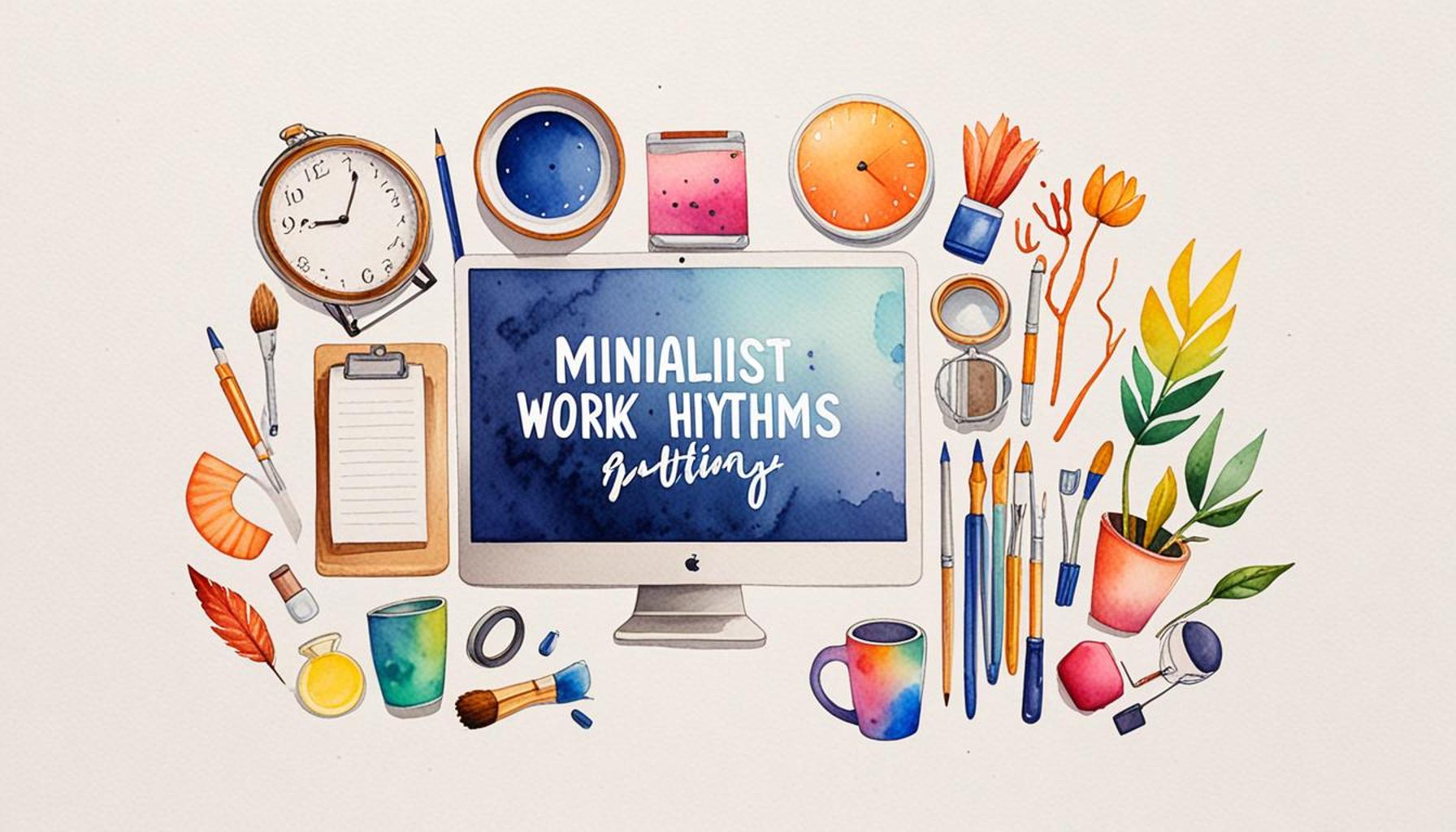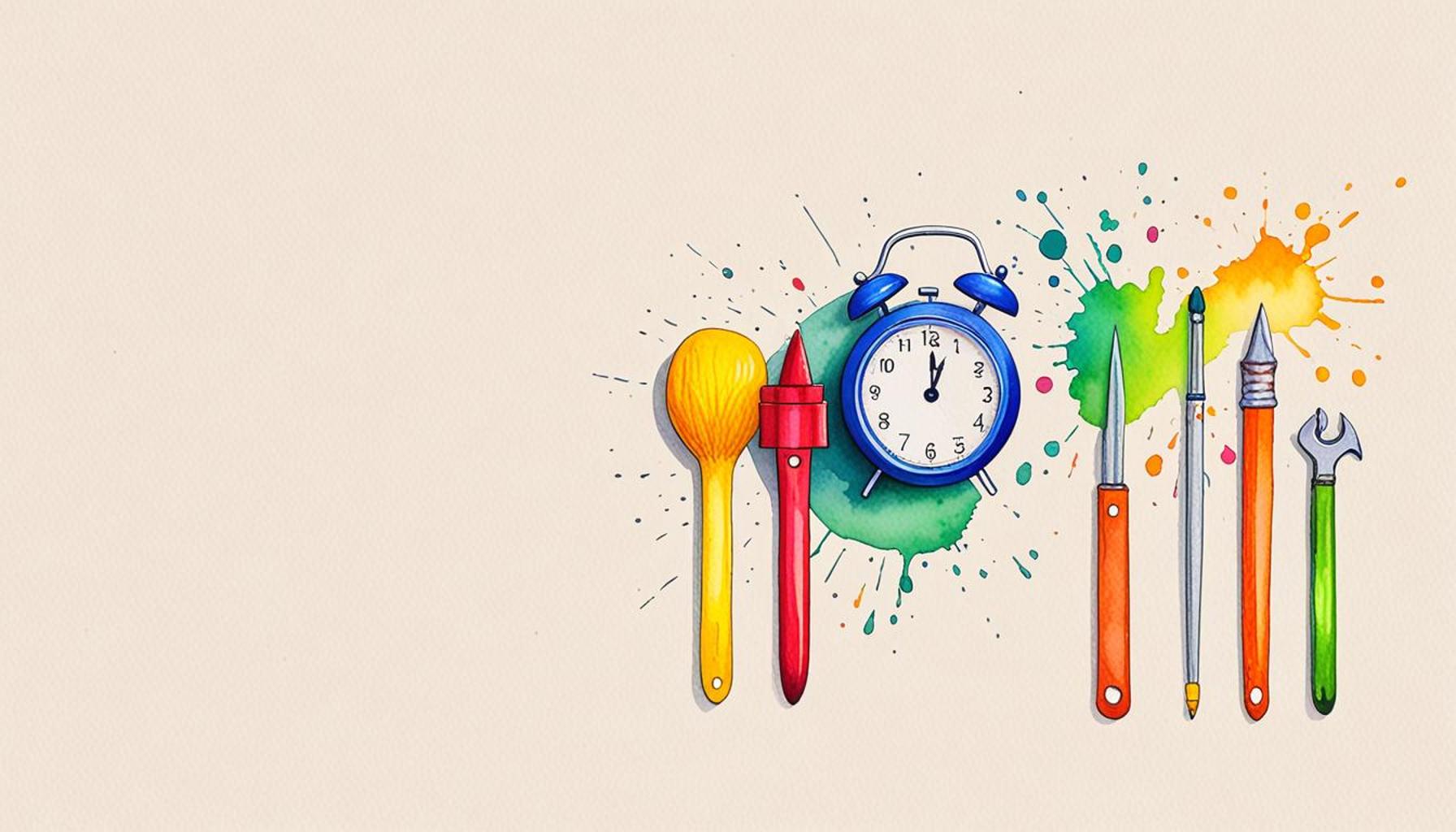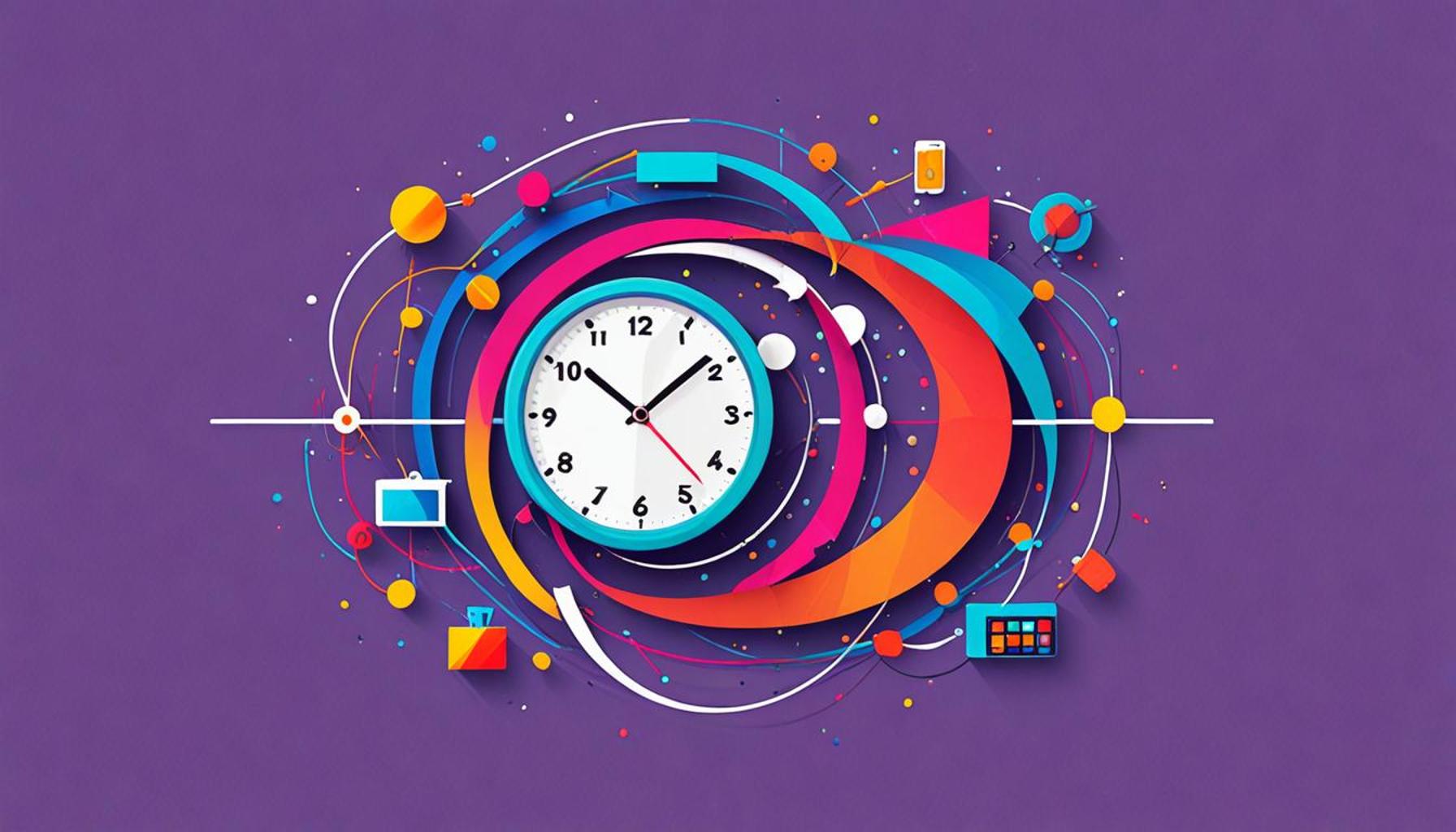Minimalist Work Rhythms: Adjusting Your Daily Routine to Maximize Productivity

Unlocking Your Potential Through Minimalism
In today’s fast-paced world, the ability to achieve the perfect balance between tasks and focus can feel like a monumental task. Juggling work obligations, personal responsibilities, and social commitments often leaves individuals feeling overwhelmed. To combat this chaos, many are turning to the concept of minimalist work rhythms, which aims to streamline daily routines and boost productivity by emphasizing simplicity and intentionality. This progressive approach not only advocates for minimalism in physical spaces but also in how we structure our work and thoughts.
Consider these innovative features of minimalist work rhythms:
- Prioritization: Identify essential tasks over distractions. For instance, instead of responding to every email as it arrives, individuals can categorize emails based on urgency, transforming their focus from reactive to proactive.
- Time Blocking: Allocate specific time slots for focused work, such as reserving the first two hours of the day for deep work before addressing meetings or administrative tasks. This method, popularized by productivity experts like Cal Newport, allows workers to harness their peak energy when tackling challenging projects.
- Mindfulness: Engage fully in each task to enhance productivity. By practicing mindfulness techniques, such as short meditation breaks or mindful breathing, workers can clear their mental clutter and improve their concentration on the tasks at hand.
By adopting these strategies, we open ourselves to a clear path that fosters clarity and efficiency. Research indicates that individuals who embrace minimalism frequently experience:
- Reduced Stress: A decluttered environment leads to a decluttered mind. The visual and mental noise diminishes, resulting in significantly lower anxiety levels.
- Enhanced Focus: Concentration sharpens as distractions are reduced, allowing individuals to dive deeper into their work. For example, turning off smartphone notifications can lead to sustained focus on projects that truly matter.
- Increased Joy: Simplifying tasks can create space for passion projects and creative pursuits, providing individuals the opportunity to engage in what enriches their lives.
As we delve deeper into the concept of minimalist work rhythms, we will explore practical strategies that can enhance your productivity in meaningful ways. By embracing this minimalist approach, are you ready to unveil a more efficient method for navigating your day? Adopting these innovations could be the key to not just surviving, but thriving in a world that often demands the opposite.
DIVE DEEPER: Click here to discover how decluttering can boost your productivity

Embracing the Power of Minimalism in Work
The tenets of minimalism extend beyond cluttered living spaces into the realm of our daily routines, offering a transformative approach to modern work life. To achieve maximized productivity, it is essential to strip away the excess, both in our environment and in our approach to time management. At the core of minimalist work rhythms lies the principle of intentionality—focusing on what truly matters while eliminating distractions and unnecessary commitments that can derail our focus.
One fundamental strategy in adopting this minimalist philosophy is task prioritization. This involves identifying which tasks deliver the most significant returns on effort and energy. A common method is the Eisenhower Box, a framework that encourages individuals to classify tasks based on their urgency and importance. By leveraging this technique, workers can effectively allocate their time to the most critical activities. Here is a snapshot of how tasks can be categorized:
- Important and Urgent: Tasks that require immediate attention, such as project deadlines or urgent client requests.
- Important but Not Urgent: Long-term projects that contribute to overall goals, requiring dedicated focus without immediate pressure.
- Urgent but Not Important: Tasks that may feel pressing, like certain emails or meetings, but do not significantly impact long-term objectives.
- Neither Urgent nor Important: Activities that can be minimized or eliminated altogether, reducing the mental burden unnecessarily.
In addition to prioritization, the practice of time blocking enhances productivity by allowing individuals to segment their day into dedicated slots for specific tasks. Rather than constantly switching gears between duties, commitment to a single task for a set period fosters deeper focus and creativity. This type of structure is crucial, particularly in a culture where multitasking often leads to diminished returns in quality and output. Productivity expert Cal Newport emphasizes that by protecting our most productive hours—often early in the morning—we can accomplish complex work without interruption.
Integrating mindfulness into our daily routines further supports a minimalist work rhythm. Research has shown that regular mindfulness practices, such as meditation or even brief moments of reflection, can significantly enhance cognitive function and diminish stress levels. Encouraging employees to take short, intentional breaks can lead to greater creativity and clearer thinking when they return to their tasks.
By exploring these minimalist work rhythms—prioritization, time blocking, and mindfulness—we add layers of efficiency and peace to our work lives. Engaging with these principles not only leads to practical benefits but fosters a profound cultural shift toward sustainable productivity. As we unravel further elements of minimalist work rhythms in the following sections, the journey towards a more productive and fulfilling professional life continues to unfold.
Understanding Minimalist Work Rhythms
In today’s fast-paced world, minimalist work rhythms are gaining traction as a way to optimize productivity. These rhythms emphasize the importance of creating a simplified daily routine that eliminates distractions and focuses on essential tasks. By systematically adjusting your schedule to align with your most productive hours, you can significantly enhance your output. Research suggests that individuals who operate within their natural work rhythms experience less fatigue and more mental clarity, leading to a greater overall performance.
| Advantage | Description |
|---|---|
| Focused Work Blocks | Enable deeper concentration by dedicating time slots solely for specific tasks. |
| Reduced Stress | Simplicity in work rhythms can alleviate the overwhelm of multitasking. |
By embracing minimalist work rhythms, individuals are encouraged to identify their peak productivity times and prioritize tasks accordingly. The integration of these rhythms in daily routine fosters a cleaner, more organized approach to work, ultimately paving the way for significant productivity gains. Moreover, finding a balance between work and personal life is easier with a clear structure that the minimalist approach promotes.
DISCOVER MORE: Click here to learn about multifunctional furniture
Implementing Minimalist Tools for Peak Performance
As we dive deeper into maximizing productivity through minimalist work rhythms, it’s essential to explore the tools and technologies that complement this approach. Embracing simplicity in digital tools can streamline your workflow, reduce stress, and enhance overall efficiency. For instance, opting for task management software that emphasizes minimalism can help you keep track of your responsibilities without overwhelming your senses. Popular tools like Todoist or Trello prioritize simplicity and usability, allowing users to focus on what truly matters rather than navigating through complex interfaces.
Additionally, employing automation tools can save significant time on repetitive tasks. Platforms such as Zapier or IFTTT can help you automate workflows between different applications, reducing the need for manual interventions that can interrupt your focus. For example, automating the transfer of information between your email and your project management tool ensures that you spend less time on mundane tasks and more on high-impact activities. The act of automating such processes aligns perfectly with minimalist principles—eliminating the clutter of unnecessary work and providing a clearer path toward productivity.
Another practical approach within minimalist work rhythms is to cultivate a distraction-free environment. While remote work has become a modern-day norm, the lines between work and personal life can easily blur, creating a backdrop for distractions. Establishing a dedicated workspace, whether at home or in a co-working space, is crucial in mentally compartmentalizing work. Simple strategies like using noise-canceling headphones, maintaining a clean desk, and consuming minimal ambient noise can enhance concentration levels significantly. According to a study by Steelcase, employees who adjust their physical workspace report up to a 20% increase in increase in productivity thanks to decreased distractions.
Incorporating the Pomodoro Technique is another effective method that mirrors minimalist principles. This time management system divides work into intervals, traditionally set at 25 minutes, followed by a five-minute break. This technique encourages sustained focus while ensuring regular intervals for refreshment. The key here is that these short bursts of concentration help sustain energy and motivation throughout the day, ultimately preventing burnout—a common pitfall of modern work culture.
Furthermore, the importance of understanding your biological rhythms cannot be understated. Recognizing when you are most alert and productive during the day can help tailor your tasks to align with your natural flow of energy. For example, night owls may benefit from planning more demanding analytical tasks for late afternoons or evenings, where their cognitive function peaks. On the other hand, morning people might find their creativity and critical thinking are at their best after a productive morning routine that includes exercise or mindfulness. This self-awareness allows for a tailored approach to workflow, making every minute purposeful and impactful.
By integrating effective tools, creating a distraction-free workspace, leveraging techniques like the Pomodoro Technique, and honoring personal energy flows, individuals can further enhance their minimalist work rhythms. These adjustments facilitate not just increased productivity, but also a healthier work-life balance, embodying a holistic approach to achieving professional success.
DISCOVER MORE: Click here to stay motivated during your decluttering journey
Conclusion: Embracing Minimalism for Enhanced Productivity
Adopting minimalist work rhythms is more than just a trend; it represents a transformative approach to how we navigate our professional lives. By simplifying our routines and embracing tools designed for efficiency, we not only enhance our productivity but also cultivate a fulfilling work experience. The integration of minimalist tools, the creation of distraction-free environments, and the application of effective time management techniques like the Pomodoro Technique offer practical strategies for individuals eager to optimize their workflow.
Recognizing and leveraging our biological rhythms allows us to align tasks with our peak productive hours, ensuring that we work smarter, not harder. This profound self-awareness is key to maximizing not only our productivity but also our overall well-being. As we tailor our daily routines to embrace these minimalist principles, we make each moment count—leading to a significant reduction in stress and an improvement in work-life balance.
In a fast-paced world increasingly defined by distraction and complexity, adopting a minimalist approach may very well be the antidote to burnout and inefficiency. As you explore and implement these concepts, consider the potential impact on your personal and professional life. Each small adjustment could lead to a monumental shift in how you experience your workday. As you embark on this journey to maximize productivity, remember that less really can be more—unlocking the door to greater focus, creativity, and success awaits.


